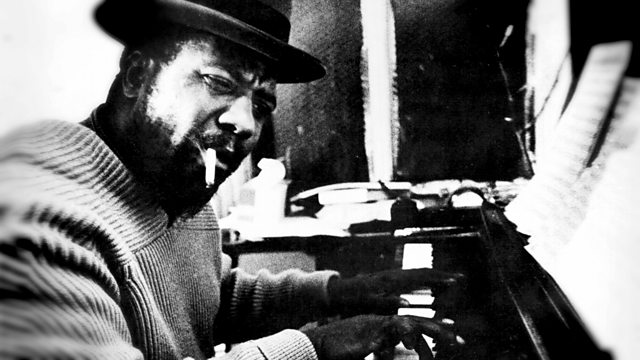
Episode 1
Jamie Cullum tells the story of Blue Note Records and the rise of modern jazz, to mark Alfred Lion's first recording session for the label in New York in 1939.
Jamie Cullum tells the three-part story of Blue Note Records and the rise of modern jazz, 70 years after the German immigrant and jazz enthusiast Alfred Lion held the very first 1939 recording session for the label in New York .
Blue Note has grown into one of the most influential music labels in the world. Today, the label boasts a back catalogue that includes such jazz icons as Thelonious Monk, Miles Davis, John Coltrane, and Herbie Hancock, as well as contemporary artists like Norah Jones.
Alfred Lion's love affair with jazz music made his approach to every aspect of the label's workings different. Musicians adored working with Blue Note - the label became known for treating their artists uncommonly well - sessions arranged after their gigs in the early hours of the morning which suited them perfectly - and giving them creative space to express themselves.
Jamie reveals how a childhood friend of Lion's would make a vital contribution to the legend of Blue Note. Francis Wolff caught the last boat out of Nazi Germany for America and found a day job in a photographic studio. But by night he joined Lion at Blue Note and became the mastermind behind the label's iconic cover designs. Wolff photographed recording sessions in a raw and unique style, showing musicians ruminating over chord changes or soaked in sweat amidst a solo. The label didn't skip a beat in putting photographs of black artists on the covers at a time when America was still deeply racially divided.
Later joined at Blue Note by artist Reid Miles, his partnership with Wolff was as influential in the world of design as the music would be in the world of jazz. It was distinguished by moody photography and creative typography, both unique and beautiful. Among this influential art, Jamie discovers a handful of mid-Fifties album covers, featuring drawings by a then little-known commercial artist called Andy Warhol.
Jamie reveals how the decades of dedicated industry finally took their toll on Lion and Wolff, the struggle to keep an independent label solvent came to a head in the late 1960s and the label was sold. Lion retired and the 1970s saw a splintering of jazz styles in the music world.
By the early 1980s the label was alive but neglected, until a music fan and archivist Michael Cuscuna started hunting down the vast vault of unreleased music by Blue Note, and found a treasure trove of unheard material that is still being released today. The label was revived and relaunched in 1985 by another life-long jazz fan Bruce Lundvall, who saw rich new exciting talent pour in, starting to experiment more with vocalists and in the process discovering one of the finest jazz singers of modern times, Norah Jones.
The greatest of all back catalogues, the most innovative jazz label working today, and since 1939 the most influential of them all - this is 70 Years of Cool, the story of Blue Note records.
Contributors include Kenny Burrell (Blue Note musician); Lou Donaldson (Blue Note musician); Soweto Kinch (jazz musician and DJ); Brian Morton (co-author of the Penguin Book of Jazz); Stephen Duffy (jazz singer and broadcaster); Dianne Reeves (Blue Note musician); Ashley Khan (journalist and author of forthcoming history of Blue Note records); Michael Cuscuna (archivist and jazz fan); Bruce Lundvall (President of Blue Note records); Sheila Jordan (Blue Note musician).
Last on
More episodes
Previous
You are at the first episode
Next
Broadcast
- Fri 1 May 2009 19:00麻豆社 Radio 2
